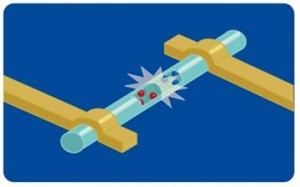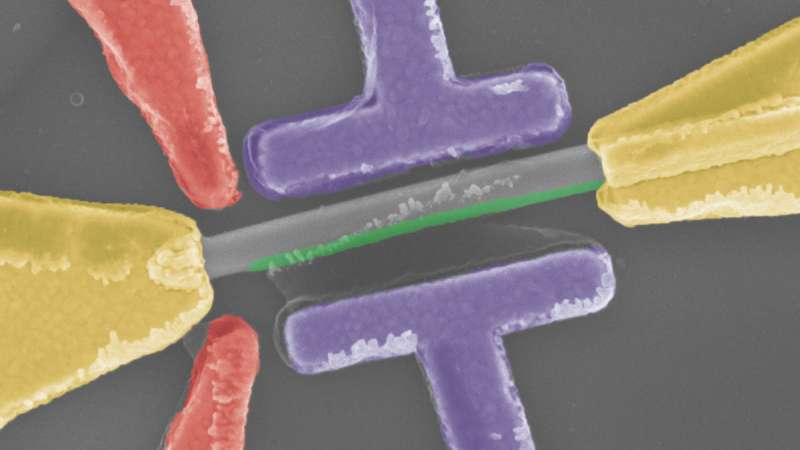Quantum nanowires of remarkable structures in the fields of nano-spintronic, nano-photonics, nanoelectronics (PhD in nano-microelectronics)
Researcher and author: Dr. ( Afshin Rashid)
Note: One-dimensional structures such as nanotubes, nano-wires and quantum wires are notable structures in the fields of nano-spintronic, nano-photonics, nanoelectronics, etc.
The reason for this attention is the large length-to-diameter ratio and the difference in their electrical, optical, chemical and magnetic properties, which has led to the use of the electron tube as an electron tube. Various methods have been mentioned for obtaining one-dimensional nanowires, including lithography-based methods (electron beam lithography, optical lithography, electric, ion beam lithography, lithography, by scanning scanning microscopy methods). (Physical vapor deposition and chemical vapor deposition) and methods based on the use of templates. The electron in the atom, in addition to rotating around the nucleus under the force of gravity, also has a rotational motion around itself.
Electromagnetic nature of nanoparticles The magnetic material, molecules and atoms that make it up have electromagnetic properties. Simply put, elements such as iron, cobalt, nickel and their alloys are absorbed by the magnet . It is called magnetic material. The classification of electromagnetic materials is based on magnetic susceptibility (the ability of a material to become magnetic). Based on this, materials are classified into three groups: ferromagnetic, paramagnetic and diamagnetic. The result of bipolar torque in electromagnetic diamagnetic materials is zero, and in the presence of a magnetic field, bipolar torque is induced in them; But for these two poles The induction is the opposite of the direction of the external magnetic field, which causes a substance (diamagnetic) to be expelled from the magnetic field. By removing the external magnetic field, the magnetic properties of these materials do not remain. The magnetic susceptibility of these materials is very low (about 6-10 -3-10). All gases (except oxygen) are water, silver, gold, copper, diamonds, graphite, bismuth, and many organic compounds ( diamagnets). The magnetic dipoles in the paramagnetic material do not have a definite and regular orientation; As a result, these materials have no magnetic properties. If they are placed inside a magnetic field, they are aligned along the lines of the magnetic field. With the removal of the magnetic field , the magnetic dipoles quickly return to their previous state in the absence of the field. In this way, paramagnetic materials acquire strong magnetic properties in nano-electromagnetic fields. Nanowires have a structure that has an amazing length to width ratio . Nanowires are very thin - it is possible to create nanowires with a diameter of only one nanometer, nanowires are used to create the smallest transistor (nanotransistors). Nano wire Nano wire can have insulating, semiconductor or metal properties . Insulators do not withstand electrical charges, while metals have very good electrical charges. The semiconductors are located between the two and are charged under suitable conditions. By placing the semiconductor wires in the proper configuration, transistors can be made that act either as switches or amplifiers .Some interesting and anti-flexible features of nanowires are due to their small scale.
Conclusion :
One-dimensional structures such as nanotubes, nanowires and quantum wires are notable structures in the fields of nano-spintronic, nano-photonics, nanoelectronics, etc.
Researcher and author: Dr. ( Afshin Rashid)
PhD in Nano-Microelectronics




